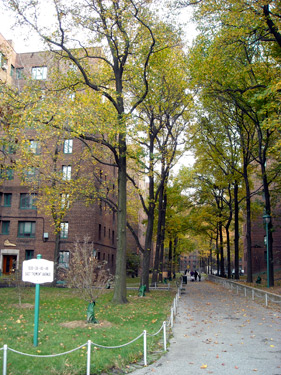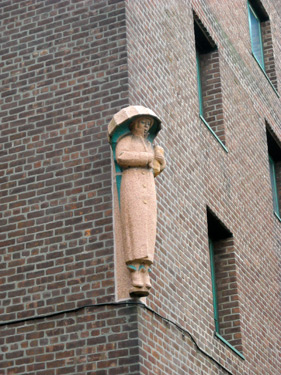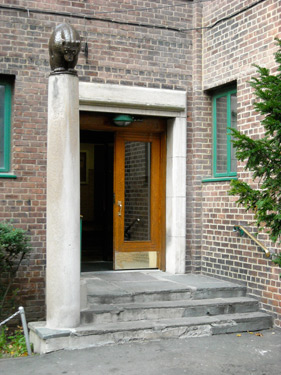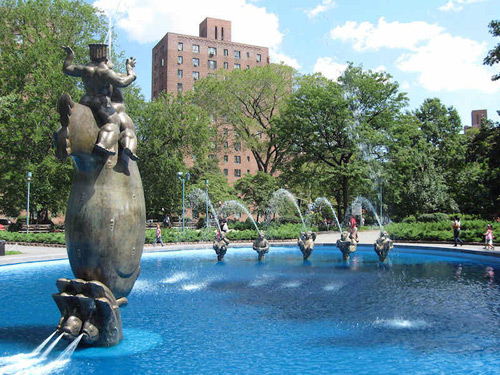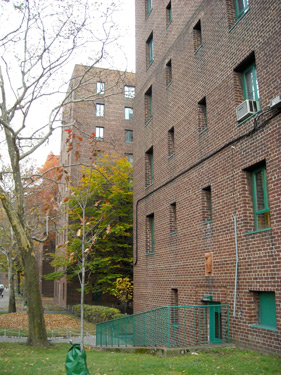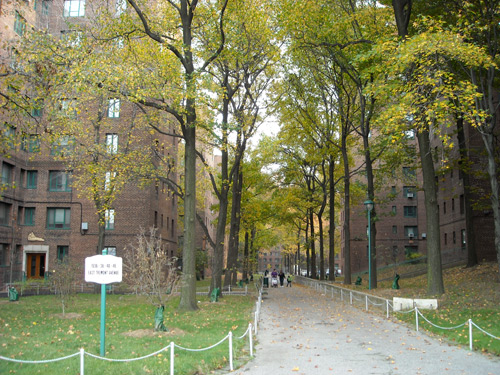Parkchester Apartment Development
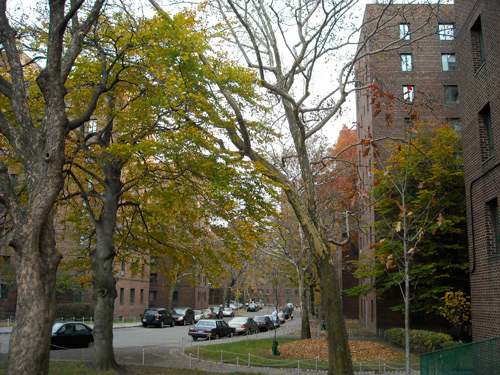
Bound by: East Tremont Ave., Purdy St., Olmstead Ave., St. Raymond’s Ave., and McGraw Ave
Built by: an appointed board of planners, architects, engineers and builders headed by Richard Shreve
1938-1942
Built on 129 acres of land formerly owned by the New York Catholic Protectory, Parkchester is a sprawling, private housing development in the East Bronx. Metropolitan Life Insurance Co. recognized the need for affordable rental housing in the 1930s, and sponsored the complex though a new State statute allowing insurance companies to invest in housing. Consisting of 51 apartment buildings, ranging from seven to thirteen stories, the development has 12,217 condominium and rental units that can house some 40,000 residents. Apartments range in size from two to five rooms each.
Taking its name from two nearby neighborhoods “Park Versailles” and “Westchester,” Parkchester was the nation’s largest privately built apartment house development at the time of its construction. It is a self contained development with all the essentials of community life: stores, supermarkets, schools, houses of worship, parks, playgrounds, professional offices, an eight-screen movie theater, restaurants, parking garages, and good public transportation. Parkchester used standardization in apartment layout and building design, based around core plans. Through careful planning, its buildings were positioned to maximize light and air and to minimize noise. Surprisingly the apartment buildings only comprise about one-quarter of Parkchester’s total property. Nearly one-half of the grounds are devoted to recreational facilities and generous landscaping with flowering trees, hedges and lawns. Metropolitan Oval, at the center of the complex, is a focal point that provides a welcome sitting area where residents enjoy seasonal flowers, trees, and delightful spouting fountains. The Oval divides the development into four quadrants and its surrounding red sheer brick buildings are patterned at building rooflines and entryways. Colorful terra cotta sculptures decorate building façades and provide visual relief.
Metropolitan Life sold Parkchester to the real estate firm of Helmsley-Spear in 1968; and within four years, the firm began to sell the apartments as condominiums while observing a non-eviction policy for non-buying tenants. By 1998, Parkchester Preservation Corp. Resources bought Parkchester from Leona Helmsley and set about installing new windows and upgrading the development’s electrical and plumbing systems.
Janet Butler Munch

